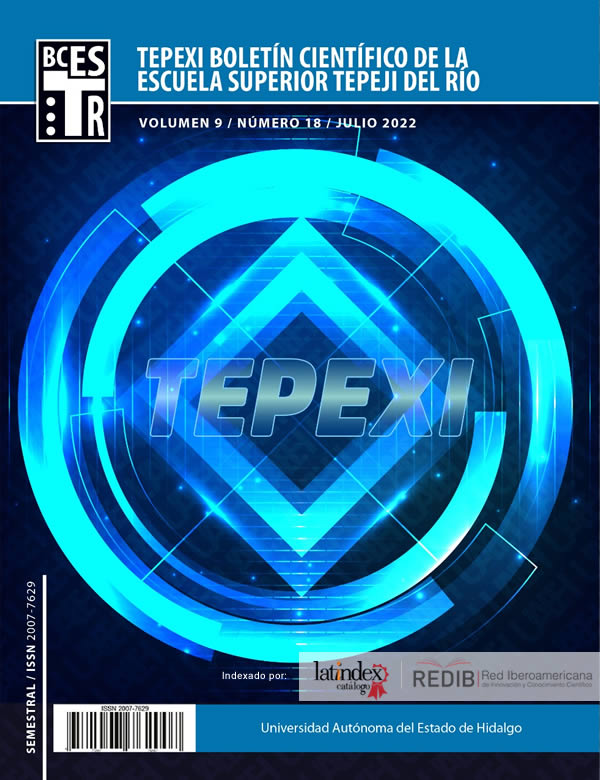Traditional use and phytochemical analysis in extracts of sauce (Salix humboldtiana Willd.) in Mexico
Abstract
The objective of this research was to determine the traditional use and chemical compounds of leaves and branches of Salix humboldtiana collected in Chumatlan, Veracruz, Mexico by measuring the cultural significance index and the main phytochemicals obtained from crude extracts and analyzed by Thin Layer Chromatography, respectively. Crude extracts biosynthesize phytochemicals in function of the vegetable organ (leaf and branches). On the other hand, traditional knowledge of species Salix is scarce in the municipality of Chumatlan. In the interviews carried out, several traditional uses of the willow tree were found.
Downloads
References
Evans, W. C. In: Trease and Evans Pharmacognosy, Edinburgh, London, New York: ed. Saunders, 2009; p. 24. https://www.elsevier.com/books/trease-and-evans-pharmacognosy/9780702029332
Hussain H, Badawy A, Elshazly A, Elsayed A, Krohn K, Riaz M, Schulz B. Chemical constituents and antimicrobial activity of Salix subserrata. Rec Nat Prod. 2011; 5: 133-137. https://hero.epa.gov/hero/index.cfm/reference/details/reference_id/1596839
Niembro RA. Árboles y arbustos útiles de México. Limusa: UACh. México, 1986; 206 p. https://www.worldcat.org/title/arboles-y-arbustos-utiles-de-mexico-naturales-e-introducidos/oclc/651480805
Costanza R, Farber S. Introduction to the special issue on the dynamics and value of ecosystem services: Integrating economic and ecological perspectives. Ecol Econ. 2002; 41: 367-373. DOI:10.1016/S0921-8009(02)00087-3
De Groot R, Wilson M, Boumans R. A typology for the classification, description and valuation of ecosystem functions, goods and services. Ecol Econ. 2002; DOI: doi.org/10.1016/S0921-8009(02)00089-7
Wachtel-Galor S, Benzie IFF. Herbal Medicine: An Introduction to Its History, Usage, Regulation, Current Trends, and Research Needs. In: Benzie IFF, Wachtel-Galor S, editors. Herbal Medicine: Biomolecular and Clinical Aspects. 2nd edition. Boca Raton (FL): CRC Press/Taylor & Francis; 2011. Chapter 1. Available from: https://www.ncbi.nlm.nih.gov/books/NBK92773/
Prontuario de Información Geográfica Municipal de los Estados Unidos Mexicanos. 2009; Chumatlán, Veracruz de Ignacio de Llave, Recuperado de http://www.beta.inegi.org.mx/contenidos/app/mexicocifras/datos_geograficos/30/30064.pdf
Basir A, Lahjie A, Simarangkir B, Matius P. Presenting the cultural significance index of plants in the muara lawa, kutai barat district. J Biol Agric Healt. 2015; 5: 140-150. https://www.iiste.org/Journals/index.php/JBAH/article/view/22887
SAS (Statistical Analysis System) Institute Inc. SAS/ETS® 9.3 User's Guide. Cary, NC. SAS Institute Inc. 2011; 1023-1335.
Díaz-Bautista M, Francisco-Ambrosio G, Espinoza-Pérez J, Barrales-Cureño HJ, Reyes C, Herrera-Cabrera B, Soto-Hernández R. Morphological and phytochemical data of vanilla species in Mexico. Data Br. 2018;10: 1730-1738. DOI:10.1016/j.dib.2018.08.212
Guevara, BQA. Guidebook to plant screening: phytochemical and biological. Publishing house. 2005; p.150. https://books.google.com.mx/books/about/A_Guidebook_to_Plant_Screening.html?id=wOtEAAAAYAAJ&redir_esc=y
Pérez RML, Argueta VA. Saberes indígenas y dialogo intercultural. Cul Rep Soc 2011; 5: 31-56. http://www.scielo.org.mx/scielo.php?script=sci_arttext&pid=S2007-81102011000100002
Ávalos A, Pérez E. Metabolismo secundario de plantas. Reduca (Biología), 2009; 2: 119-145. http://www.revistareduca.es/index.php/biologia/article/view/798
Travieso MC, Betancourt A, Escobar A, Linares A, Rodríguez Y, Pérez T. Validación del método de cuantificación de taninos totales en formulaciones semisólidas de Rhizophora mangle l. (mangle rojo). Rev Cub Plant Med. 2011; 16: 82-93. http://scielo.sld.cu/scielo.php?script=sci_arttext&pid=S1028-47962011000100009
Modh Z, Fehmeeda A. Phytochemical investigation and growth inhibiting effects of Salix alba leaves against some pathogenic fungal isolates. World J Pharm Ph Sci. 2014; 3: 1320-1330. https://www.wjpps.com/Wjpps_controller/abstract_id/2167
Mohamed M, Mahmoud M, Raafat H, El-Sayed E. Phytochemical investigation and in vitro antioxidant activity of different leaf extracts of Salix mucronata Thunb. J Appl Pharm Sci. 2015; 5: 80-85. DOI: 10.7324/JAPS.2015.501213
Niemeyer H. Quantitative screening for alkaloids of native vascular plant species from Chile: biogeographical considerations. Bol Latinoam Car Plant Med Arom. 2014; 13: 109-116. https://www.researchgate.net/publication/287511258_Quantitative_screening_for_alkaloids_of_native_vascular_plant_species_from_Chile_Biogeographical_considerations
El-Shazly A, El-Sayed A, Fikrey E. Bioactive secondary metabolites from Salix tetrasperma Roxb. Z Naturforschung. 2012; 67: 353-359. DOI: 10.5560/znc.2012.67c0353
Chung S, Kim Lalita S, Kyoung JP, Sun YK, Sang UC, Ki H, Kim K RL. Salicin derivatives from Salix glandulosa and their biological activities. Fitoter. 2015; 106: 147-152. doi: 10.1016/j.fitote.2015.08.013.
Jia H, Li J, Zhang J, Sun P, Lu M, Hu J. The Salix psammophila SpRLCK1 involved in drought and salt tolerance. Plant Physiol Biochem. 2019; 144: 222-233. DOI:10.1016/j.plaphy.2019.09.042
Mizuno M, Kato M, Misu C, Linuma M, Tanaka T. Chaenomeloidin: a phenolic glucoside from leaves of Salix chaenomeloides. J Nat Prod. 1991; 54: 1447-1450. doi.org/10.1021/np50077a042
Chung SK, Lalita S, Jooseok O, Sun YK, Sang UC, Kang RL. A new phenolic Compound from Salix glandulosa. Heterocycles. 2018; 5: 931-942. DOI: 10.3987/COM-18-13892












